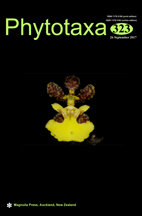Abstract
Peliosanthes Andrews (1808: 605) belongs to the subfamily Nolinoideae (Chase et al. 2009) of Asparagaceae (APG 2016). This genus contains 60–65 species distributed widely in South and Southeast Asia (Nguyen et al. 2017). Peliosanthes macrophylla Wall. in Baker (1879: 505) was described by Baker based on the collections made from “Himalaya Orientalis” in Sikkim and Mishmi. In the original description, Baker cited three collectors (J.D. Hooker & T. Thomsons, C.B. Clarke and W. Griffith). The first author could trace the collection of J.D. Hooker & T. Thomson (s.n., K000099377!, K000099378!, P00753584!), and W. Griffith (5841, P00214605!) which fit with the protologue of the species. Since no holotype was indicated these all should be regarded as syntypes according to Art. 9.5 of ICN (McNeill et al. 2012). According to Art. 9.12, the lectotype should be chosen from those syntypes. Since the specimen designated as “Griffith 5841” (P00214605!) is the only cited in protologue with collection number, it is selected here as the lectotype. A detailed morphological description and photographic illustration (Fig. 1) of the species based on living plant material is also given here to facilitate its identification.

